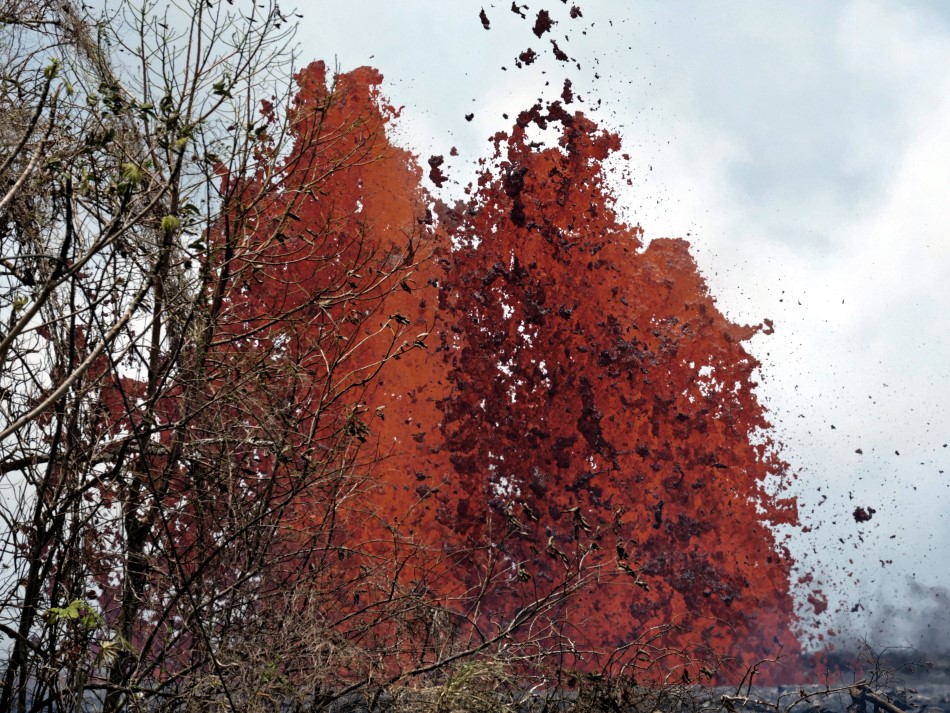
Lava fountain from an eruption fissure on Hawaii.
 A volcano forms around an opening in the earth's crust from which lava, tephra and gases escape. The opening of the volcano is the production vent. The volcanic products are deposited around this vent and form a geological structure known as a volcano. Both the vent and the volcano can take different forms. These depend on the type of lavas produced and the type of eruptions.
A volcano forms around an opening in the earth's crust from which lava, tephra and gases escape. The opening of the volcano is the production vent. The volcanic products are deposited around this vent and form a geological structure known as a volcano. Both the vent and the volcano can take different forms. These depend on the type of lavas produced and the type of eruptions.
The rule of thumb is that the colder and tougher the lava is, the more explosive the eruptions are and the steeper the volcano flanks become. Conversely, it is then logical that volcanoes that produce hot and thin lava are less explosive (i.e. more effusive). The slopes of these volcanoes are often gently inclined. Nevertheless, they can grow to considerable size. In fact, the largest volcano in the world is a shield volcano with gently sloping slopes: Mauna Loa in Hawaii.
A volcano grows and changes. An initial eruption fissure or fissure volcano can become a shield volcano, or a series of cinder cones can form on the fissure.
A cinder cone forms around an explosively active production vent, which can develop into a stratovolcano.
After a large eruption, part of the volcano may collapse. It sinks, or even collapses into itself. In these cases a caldera is formed.
Lava domes, or dome volcanoes are formed from a very viscous lava flow, which often appears unspectacular at the beginning of the volcanic eruption. The viscous lava clogs the transport vent and pushes itself up to a dome, which can reach a respectable size.
Maar volcanoes are generated by strong explosive eruptions, which are caused by the contact of magma with groundwater.
Volcanoes are subject to constant dynamics and a volcanic landscape is constantly changing. Sometimes so slowly that we hardly notice it, sometimes so fast that the effects are catastrophic. The ground rises and falls to the rhythm of the rising and sinking magma in the earth's interior under the volcano.
Craters form, enlarge and are filled in again. A nice recent example is the Halema'uma'u crater of Kilauea in Hawaii.
Erosive processes strongly influence the volcano. Rain and frost wear down the often loosely piled up lava rock. Debris avalanches and landslides create canyons on the volcano flanks. After ash eruptions lahars are often formed. These mud flows deepen river beds and pose a serious danger to local residents. Pyroclastic flows also deposit fluffy material which, mixed with water, generates lahars.
If a volcano goes extinct, it is usually eroded faster than other mountains. Volcanic islands sink back into the sea and form the basis for atolls: as the volcano erodes, a fringing reef grows at its edge. What remains is a ring-shaped island of corals. But even an atoll sinks into the sea at some point. The continental drift causes the ocean floor with the ruins of the volcanic islands to migrate until they are swallowed by subduction at a deep-sea trench. There they submerge into the earth's mantle, are melted and recycled.